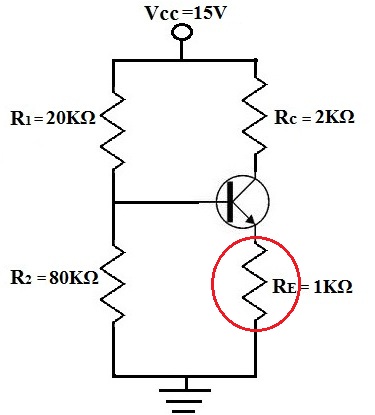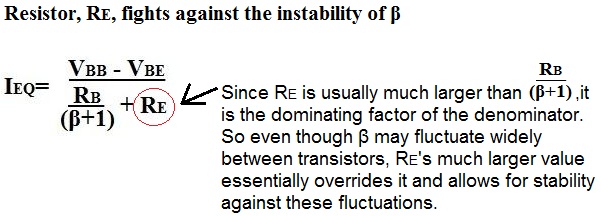The Importance of Emitter Resistance, RE , in a Transistor Circuit
RE provides stability in gain of the emitter current of a transistor circuit.
The β of a transistor, its gain or amplification factor, can vary by large amounts from transistor to transistor, even if they're the same exact type from the same batch. There is no way to replicate the same exact βs across transistors. Therefore, when we are designing transistor circuits where we want roughly the same gain in all of them, we must design them in a way that produces the same gain despite fluctuations in the β values. We do this by carefully choosing the emitter resistance, RE, which provides stability against differences in β.
RE balances out the differences in β in a transistor circuit:


Let's work out the example above and show how RE fights against the different βs of transistors and
still allows for roughly the same current gain:
For the circuit above,


Now let's say for one transistor β=100. Then,

Now let's say that another transistor has a much wider transistor β of 150. Then,

So even though there is a difference of 50 of β in the transistors, there is less than a half of milliampere difference in the output current, IE. If wanted, an even larger value of RE can be used so that there is even more stability against the β of transistors. However, realize that the larger RE is, the more gain that is lost for amplification in the circuit because the value of IE. So there must be balance in the design of the value of RE.